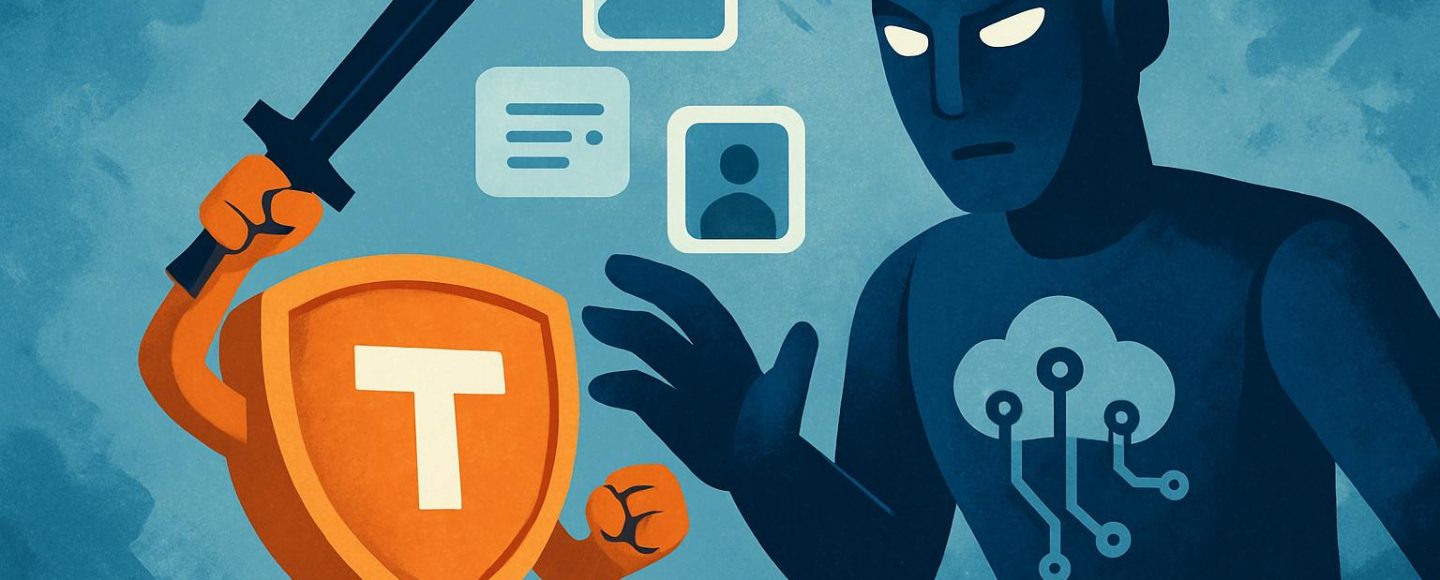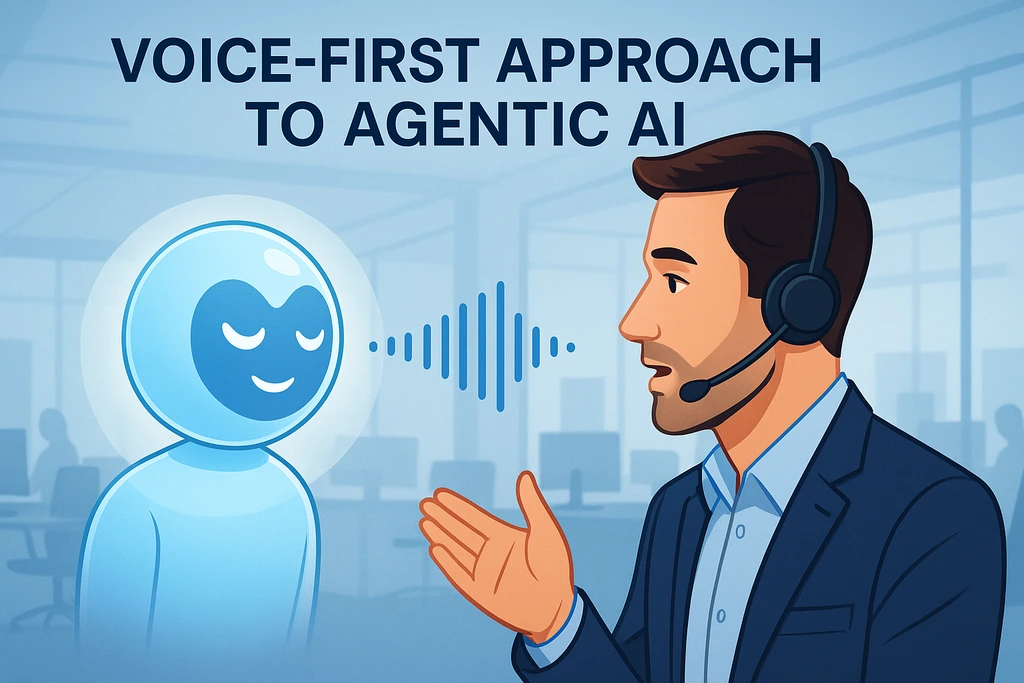Web Development Trends in 2025
In 2025 the web development landscape is evolving at a breakneck pace. New technologies are emerging, user expectations are shifting, and developers are racing to keep up. Based on insights from industry leaders here are the top trends that are shaping the future of web development. Whether you're a seasoned developer or just starting out, these trends will help you stay ahead of the curve. 1. AI Integration Artificial Intelligence is no longer just a buzzword; it’s becoming an essential tool in the developer’s toolkit. From automating mundane coding tasks to creating personalized user experiences, AI is transforming how we build and interact with websites. Tools like GitHub Copilot and Tabnine are already helping developers write code faster, while AI-driven features like chatbots and predictive analytics are enhancing user engagement. For example, e-commerce sites are using AI to recommend products based on browsing history, boosting sales and satisfaction. As AI continues to evolve, its integration into web development will only deepen, making it a must-know technology for developers. 2. Progressive Web Apps (PWAs) Progressive Web Apps are blurring the line between web and native applications. By combining the best features of both, PWAs offer offline functionality, push notifications, and lightning-fast load times—all without the need for app store downloads. Companies like Twitter and Uber have already embraced PWAs, seeing significant improvements in user engagement and performance. For instance, Twitter Lite’s PWA led to a 65% increase in pages per session. In 2025, PWAs are becoming the go-to solution for businesses looking to provide seamless experiences across devices, making them a critical trend for developers to master. 3. Headless CMS Headless CMS is all about flexibility. By separating the content management backend from the front-end presentation layer, developers can deliver content across multiple platforms—think websites, mobile apps, and even smartwatches—with ease. This approach simplifies updates and gives teams the freedom to use their preferred tech stack. Big names like Spotify have adopted headless CMS to streamline their content delivery, proving its value in 2025. It’s a trend that’s empowering developers to build more dynamic, scalable web experiences. 4. Voice Search Optimization Have you noticed how many people talk to their devices these days? Voice search is exploding, with more users relying on assistants like Siri and Alexa to find what they need. For web developers, this means optimizing sites for natural language queries—think conversational phrases instead of rigid keywords. Stats show voice search is growing fast, and websites that adapt will stay ahead in SEO rankings and user accessibility. It’s time to make your site voice-ready! 5. Low-Code/No-Code Platforms What if you could build a website without writing a single line of code? Low-code and no-code platforms are making that a reality, opening web development to non-coders and speeding up the process for pros. Tools like Bubble and Webflow are empowering everyone from entrepreneurs to small businesses to create robust sites fast. In 2025, these platforms are leveling the playing field, letting creativity trump technical barriers. Developers, don’t sleep on this—it’s changing the game. 6. Web Performance Optimization (Core Web Vitals) Speed matters. Google’s Core Web Vitals—metrics like loading time, interactivity, and visual stability—are now key to both user experience and search rankings. Slow sites lose visitors, plain and simple. Developers are doubling down on optimization techniques, using tools like Lighthouse to fine-tune performance. In 2025, nailing Core Web Vitals isn’t just a bonus—it’s a necessity for staying competitive. 7. Security and Compliance Cyber threats are on the rise, and users are more privacy-conscious than ever. In 2025, web developers can’t afford to skimp on security. Think encrypted connections, regular audits, and compliance with regs like GDPR. Recent stats show cyberattacks spiking, making robust security a top priority. Building trust through secure, compliant websites isn’t optional—it’s what keeps users coming back. 8. Mobile-First Development With most web traffic coming from phones, mobile-first design is a no-brainer. It’s all about crafting sites that shine on small screens before scaling up. Responsive layouts and mobile testing tools are must-haves in 2025, ensuring smooth experiences no matter the device. If your site isn’t mobile-friendly, you’re leaving users—and opportunities—behind. 9. AR/VR Augmented and Virtual Reality are taking the web to new dimensions. Imagine shopping online and “trying” products in your living room via AR, or exploring a virtual storefront in VR. E-commerce giants are already jumping on this, using WebAR and We

In 2025 the web development landscape is evolving at a breakneck pace. New technologies are emerging, user expectations are shifting, and developers are racing to keep up. Based on insights from industry leaders here are the top trends that are shaping the future of web development. Whether you're a seasoned developer or just starting out, these trends will help you stay ahead of the curve.
1. AI Integration
Artificial Intelligence is no longer just a buzzword; it’s becoming an essential tool in the developer’s toolkit. From automating mundane coding tasks to creating personalized user experiences, AI is transforming how we build and interact with websites. Tools like GitHub Copilot and Tabnine are already helping developers write code faster, while AI-driven features like chatbots and predictive analytics are enhancing user engagement. For example, e-commerce sites are using AI to recommend products based on browsing history, boosting sales and satisfaction. As AI continues to evolve, its integration into web development will only deepen, making it a must-know technology for developers.
2. Progressive Web Apps (PWAs)
Progressive Web Apps are blurring the line between web and native applications. By combining the best features of both, PWAs offer offline functionality, push notifications, and lightning-fast load times—all without the need for app store downloads. Companies like Twitter and Uber have already embraced PWAs, seeing significant improvements in user engagement and performance. For instance, Twitter Lite’s PWA led to a 65% increase in pages per session. In 2025, PWAs are becoming the go-to solution for businesses looking to provide seamless experiences across devices, making them a critical trend for developers to master.
3. Headless CMS
Headless CMS is all about flexibility. By separating the content management backend from the front-end presentation layer, developers can deliver content across multiple platforms—think websites, mobile apps, and even smartwatches—with ease. This approach simplifies updates and gives teams the freedom to use their preferred tech stack. Big names like Spotify have adopted headless CMS to streamline their content delivery, proving its value in 2025. It’s a trend that’s empowering developers to build more dynamic, scalable web experiences.
4. Voice Search Optimization
Have you noticed how many people talk to their devices these days? Voice search is exploding, with more users relying on assistants like Siri and Alexa to find what they need. For web developers, this means optimizing sites for natural language queries—think conversational phrases instead of rigid keywords. Stats show voice search is growing fast, and websites that adapt will stay ahead in SEO rankings and user accessibility. It’s time to make your site voice-ready!
5. Low-Code/No-Code Platforms
What if you could build a website without writing a single line of code? Low-code and no-code platforms are making that a reality, opening web development to non-coders and speeding up the process for pros. Tools like Bubble and Webflow are empowering everyone from entrepreneurs to small businesses to create robust sites fast. In 2025, these platforms are leveling the playing field, letting creativity trump technical barriers. Developers, don’t sleep on this—it’s changing the game.
6. Web Performance Optimization (Core Web Vitals)
Speed matters. Google’s Core Web Vitals—metrics like loading time, interactivity, and visual stability—are now key to both user experience and search rankings. Slow sites lose visitors, plain and simple. Developers are doubling down on optimization techniques, using tools like Lighthouse to fine-tune performance. In 2025, nailing Core Web Vitals isn’t just a bonus—it’s a necessity for staying competitive.
7. Security and Compliance
Cyber threats are on the rise, and users are more privacy-conscious than ever. In 2025, web developers can’t afford to skimp on security. Think encrypted connections, regular audits, and compliance with regs like GDPR. Recent stats show cyberattacks spiking, making robust security a top priority. Building trust through secure, compliant websites isn’t optional—it’s what keeps users coming back.
8. Mobile-First Development
With most web traffic coming from phones, mobile-first design is a no-brainer. It’s all about crafting sites that shine on small screens before scaling up. Responsive layouts and mobile testing tools are must-haves in 2025, ensuring smooth experiences no matter the device. If your site isn’t mobile-friendly, you’re leaving users—and opportunities—behind.
9. AR/VR
Augmented and Virtual Reality are taking the web to new dimensions. Imagine shopping online and “trying” products in your living room via AR, or exploring a virtual storefront in VR. E-commerce giants are already jumping on this, using WebAR and WebVR to boost engagement. In 2025, AR/VR are set to make web experiences more immersive than ever—don’t miss out on this cutting-edge trend.
10. Blockchain Technology
Blockchain isn’t just for crypto anymore—it’s hitting web development big time. From secure transactions to decentralized data storage, it’s adding trust and transparency to online interactions. Think tamper-proof user identities or smart contracts baked into your site. As companies like IBM experiment with blockchain on the web, 2025 is the year this tech goes mainstream for developers.
Conclusion
The web development landscape in 2025 is dynamic and full of opportunities. From AI-powered tools to immersive AR/VR experiences, these trends are shaping the future of the web. By staying informed and adapting to these changes, developers can create websites that are not only functional but also innovative and user centric.
So, what do you think about these trends? Have you already started implementing any of them in your projects? Share your thoughts in the comments below!










































































































































































![[The AI Show Episode 156]: AI Answers - Data Privacy, AI Roadmaps, Regulated Industries, Selling AI to the C-Suite & Change Management](https://www.marketingaiinstitute.com/hubfs/ep%20156%20cover.png)
![[The AI Show Episode 155]: The New Jobs AI Will Create, Amazon CEO: AI Will Cut Jobs, Your Brain on ChatGPT, Possible OpenAI-Microsoft Breakup & Veo 3 IP Issues](https://www.marketingaiinstitute.com/hubfs/ep%20155%20cover.png)
















































































































































































































































.jpg?width=1920&height=1920&fit=bounds&quality=70&format=jpg&auto=webp#)
























_Michael_Burrell_Alamy.jpg?width=1280&auto=webp&quality=80&disable=upscale#)





























































































































































































